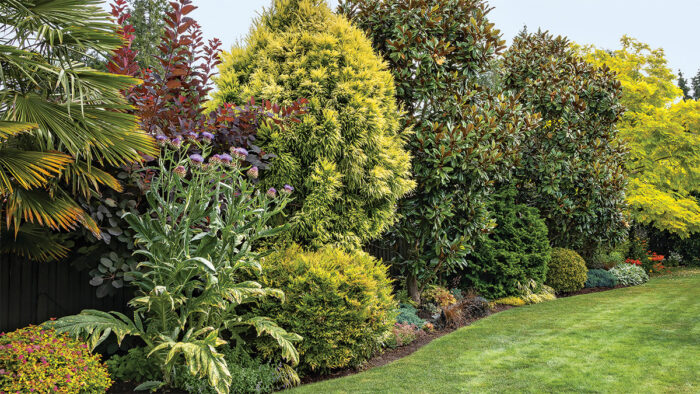
When it comes to big-ticket items, like a patio that will define a key outdoor room, irrigation that must be installed before anything else, or slow-growing evergreens that will be the essential bones of a design, you’ve got to think ahead. Here are some of the things I keep in mind when I work with clients to build functional, livable gardens.
Rule 1: Don’t make too narrow a path
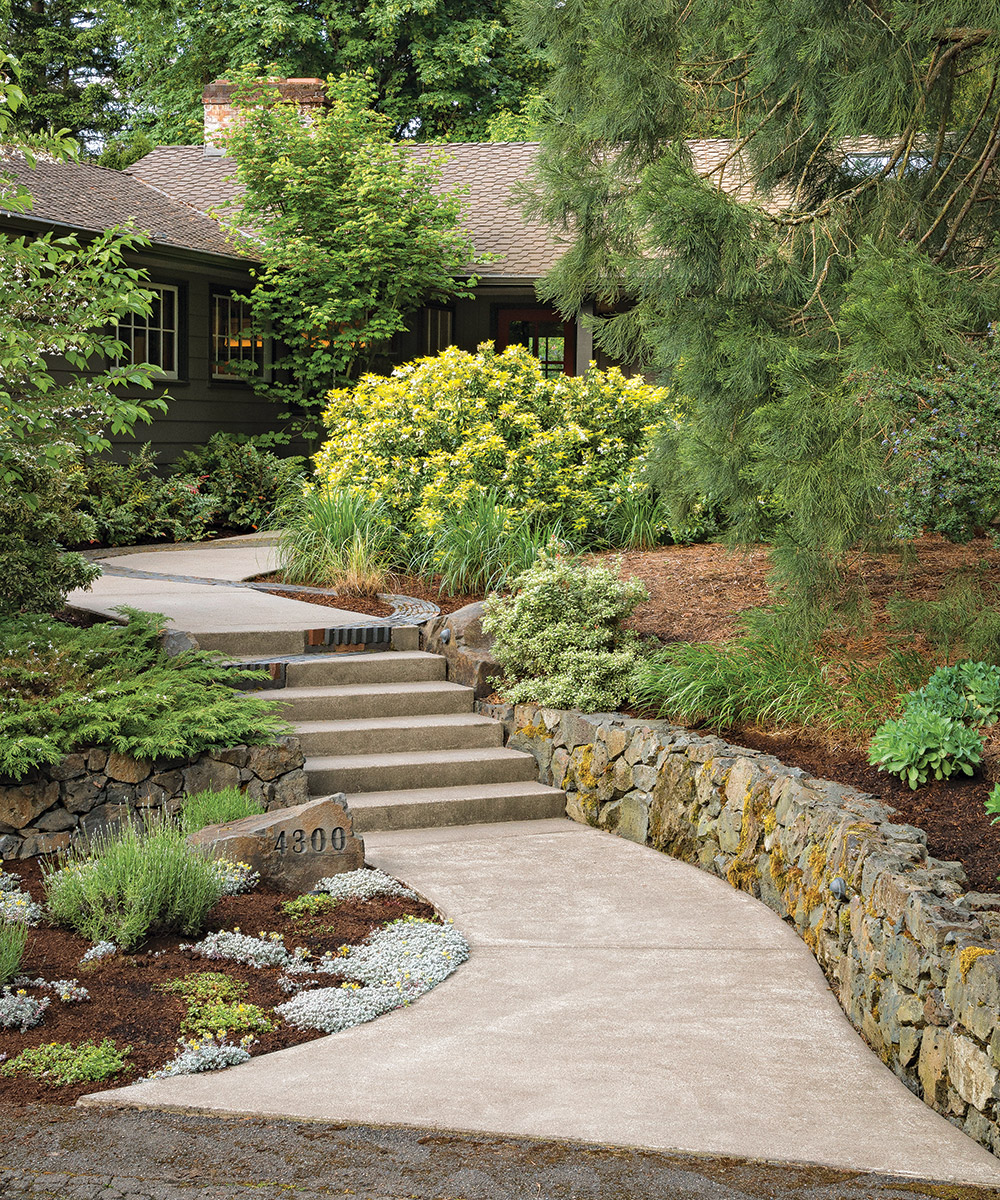
If you have the room, give yourself a 5-foot-wide path. This allows two people to walk side by side. For a front-entrance approach, the bigger the house, the wider the path or walkway should be. A wider path also provides enough room for plants to grow in to soften the edges, which reduces maintenance. Not every path needs to be 5 feet wide, however; a secondary utility path used for maintenance may only need to be 3 feet wide.
Rule 2: Think about irrigation in advance
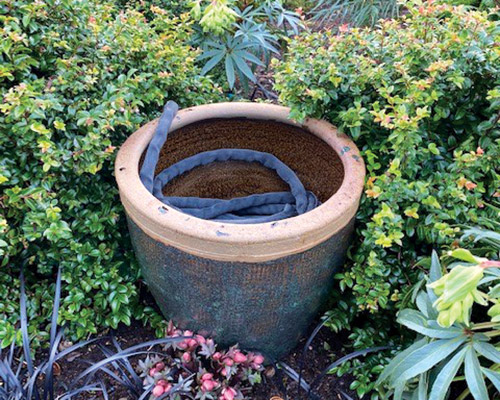
Whether you are installing a new garden or renovating a mature one, don’t let irrigation be an afterthought. Think about how nice it would be to have access to water near your vegetable garden, pond, or birdbath. The water in my pond evaporates at least 2 inches a week, and sometimes more in warmer weather. If you already have an in-ground irrigation system, it is relatively easy to install a spigot directly into your water source main line. Consult an irrigation specialist if necessary. In a cold climate, a spigot installed on the main line would drain automatically when the irrigation system is flushed out for winter.
In a narrow space, such as along the side of a house or fence, a drip system is the most efficient way to irrigate. It uses less water and has the least amount of overspray on the house, fence, or pathways. (Learn more about drip irrigation at Drip Irrigation Basics.)
If you have a large garden, consider adding a faucet and a reel for the hose in a spot that is easily accessible but also slightly hidden. You’ll have water when and where you need it, but you won’t have to haul a long hose across your property. Not enough room for a reel? I coil my hose in an attractive frost-proof container that is just large enough to hold the hose (photo).
Rule 3: Plant two-thirds of your garden with evergreens
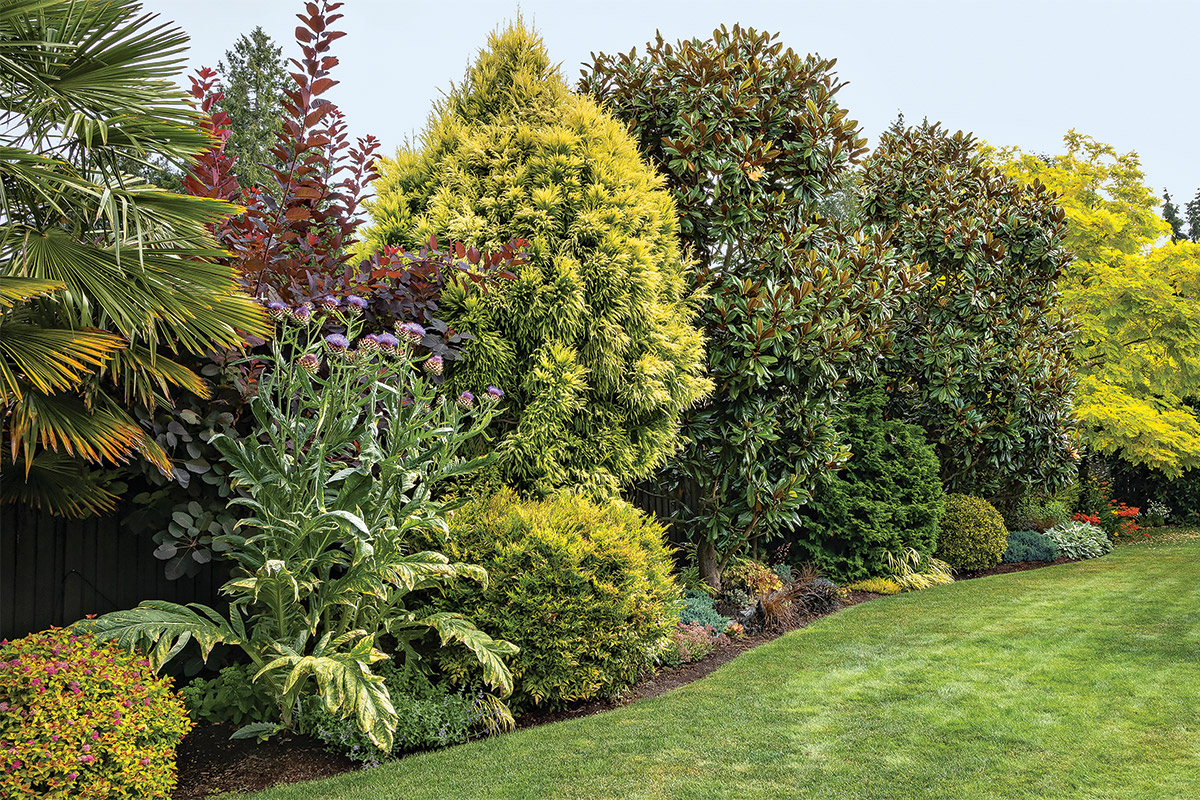
Most folks think a garden that is two-thirds evergreen could not possibly be colorful, blooming, or fragrant. I take that challenge and show them that it certainly can be. The remaining one-third is then reserved for the fluff and drama of deciduous shrubs and perennials.
Once established, the evergreens will take care of themselves if you have chosen the right plants for your conditions. The only maintenance you’ll need to do will be on the remaining one-third.
Conifers in every shape and size are the puzzle pieces that connect the garden together and anchor the landscape to the home. Broadleaf evergreens, with their bold, dense habits and glossy surfaces that reflect the light, also make great anchors. These evergreens come in a variety of sizes, so be sure to note how much space is available.
When you are placing an evergreen, think first about the plant’s shape when mature, and then think about color. If you have the room, use the same plant several times to create a sense of cohesiveness.
Rule 4: To figure out patio size, measure the height of the house
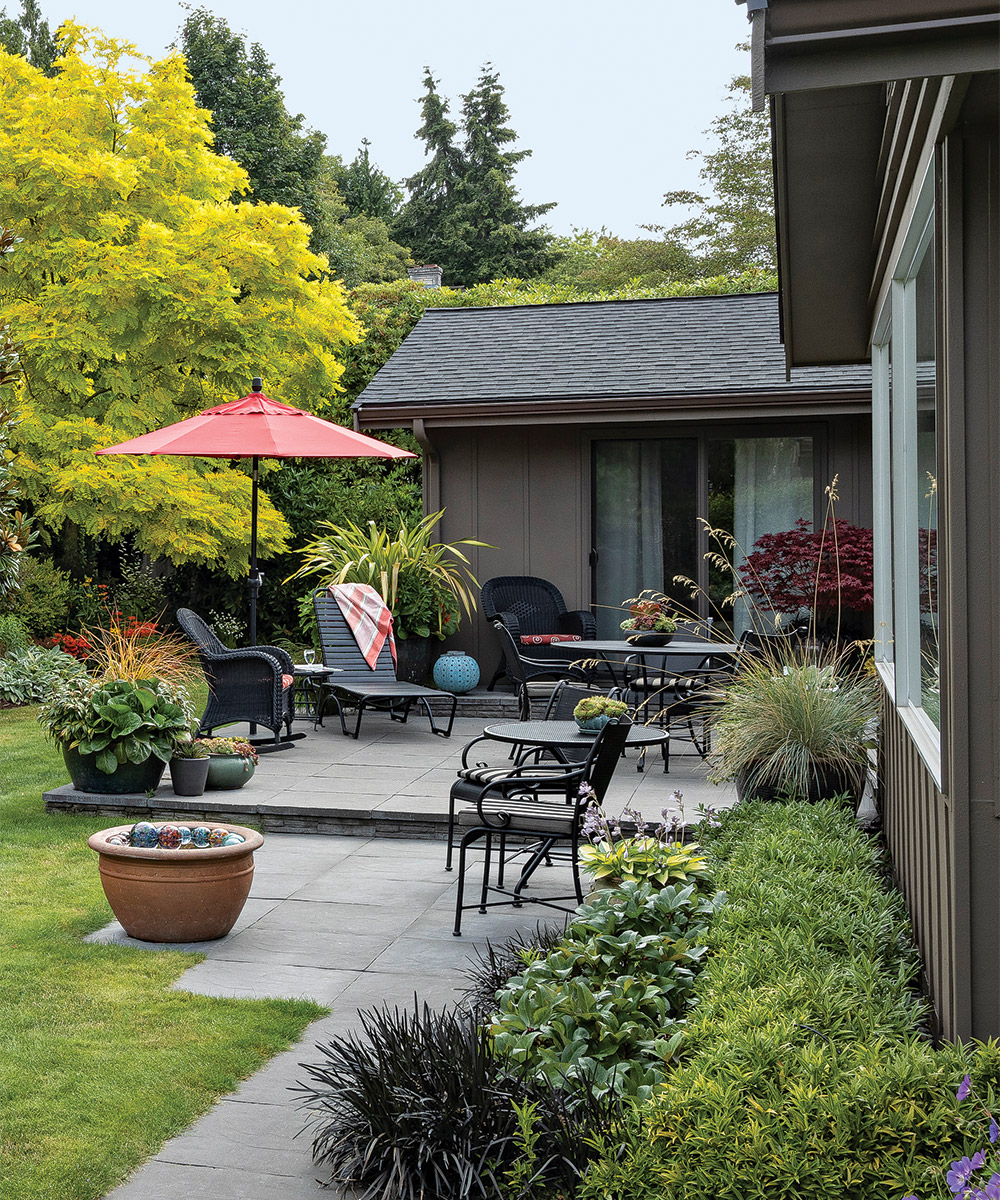
When deciding how large to make a new outdoor living area, start by measuring the height of your house from grade to the roof’s ridge line.
The distance to the ridge line for most one-story houses is 15 to 17 feet. Start by placing the edge of the patio or deck out from the house that far (or farther out, if the house is taller). Mark off your space with landscape paint or a garden hose so you are able to envision the space more easily.
This will help you start to find the correct proportions. You should also think about how you plan to use this outdoor space. If you will use it for dining or entertaining, will there be enough room for furniture and guests? Provide enough space to accommodate your lifestyle. If you are unsure, and have enough room, bigger is always better.
Plant Picks: Evergreens That Add Interest or Some Serious Drama
|
|
|
1. ‘Sekkan-sugi’ Japanese cedar (Cryptomeria japonica ‘Sekkan-sugi’, Zones 6–9)
2. ‘Goshiki’ false holly (Osmanthus heterophyllus ‘Goshiki’, Zones 6–9)
3. Southern magnolia (Magnolia grandiflora, Zones 6–10)
4. ‘Berrima Gold’ incense cedar (Calocedrus decurrens ‘Berrima Gold’, Zones 5–8)
5. ‘Nana Lutea’ hinoki cypress (Chamaecyparis obtusa ‘Nana Lutea’, Zones 4–8)
6. Late cotoneaster (Cotoneaster lacteus* syn. C. parneyi, Zones 6–8)
|
|
*Invasive alert: Late cotoneaster (Cotoneaster lacteus)
This plant is considered invasive in CA.
Please visit invasiveplantatlas.org for more information.
Stacie Crooks is the owner and principal designer at Crooks Garden Design in Seattle.






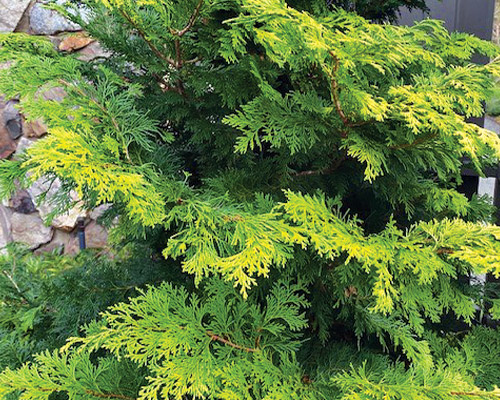




Comments
Log in or create an account to post a comment.
Sign up Log in